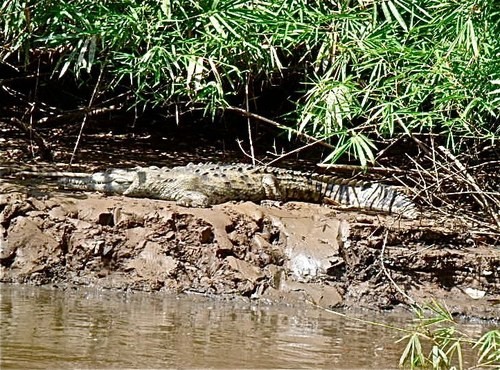American crocodile
A species of Crocodiles Scientific name : Crocodylus acutus Genus : Crocodiles
American crocodile, A species of Crocodiles
Scientific name: Crocodylus acutus
Genus: Crocodiles
Content
Description General Info
Description
The American crocodile (Crocodylus acutus) is a species of crocodilian found in the Neotropics. It is the most widespread of the four extant species of crocodiles from the Americas. Populations occur from the Atlantic and Pacific coasts of southern Mexico to South America as far as Peru and Venezuela. It also lives on many of the Caribbean islands such as Cuba, Jamaica, Hispaniola and Grand Cayman.
General Info
Lifespan
70-80 years
Diet
American crocodile is an opportunistic predator, primarily consuming fish and crustaceans. Other significant dietary components include amphibians, birds, and mammalian carcasses, reflecting its adaptive feeding behavior.
Appearance
American crocodile is a large, robust aquatic reptile with long, tapered bodies. Its skin is tough, leathery, and notably armored with scaly plates. Exhibiting an overall grayish-green color, its darker upper body is dotted with blackish marks. Notable features include a long, strong jaw with visible cone-shaped teeth and a muscular tail. No substantial appearance differences are noted due to age or gender.
Behavior
American crocodile is a semi-aquatic, primarily nocturnal predator. Notably territorial, it prefers solitary life, guarding its territory by head-slapping or jaw-clapping. American crocodile's diet, predominantly fish, is obtained through stealthy underwater ambushes. This species demonstrates unusual parental care, with females recurringly checking nests and assisting hatchlings toward water post-hatching.
Population
Increasing
Scientific Classification
Phylum
Chordates Class
Reptiles Order
Crocodilians Family
Crocodiles Genus
Crocodiles Species
American crocodile 